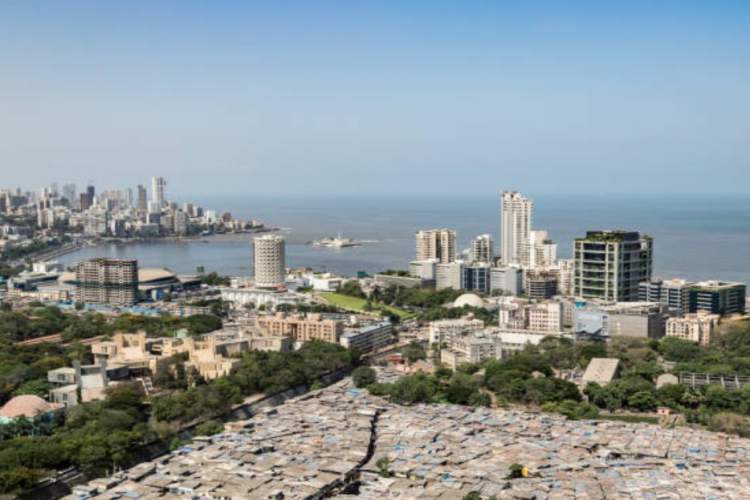India economic growth paradox: The world economy now produces about $110 trillion of output, yet the paradox of progress persists: nearly 700 million people still live in extreme poverty, and fewer than one-fifth of the Sustainable Development Goals are on track. The headline number says prosperity; the lived reality says otherwise. GDP is a measure of size, not of life chances. Human development—captured by indices that track health, education and income—tells us whether growth is improving people’s lives.
Growth matters. It creates jobs, expands tax revenues and funds infrastructure. But growth by itself is no guarantee of well-being. India, for instance, grew by about 8.2% in 2023—among the fastest in the world—yet ranked 134 on the Human Development Index for 2022. The gap reflects deficits in health and education that output numbers cannot mask. Norway sits near the top with an HDI around 0.966; Nigeria’s HDI is about 0.548—evidence that similar growth rates can yield very different human outcomes depending on how countries invest in people. The fiscal space that growth creates must be channelled to schools, clinics and safety nets; otherwise, growth remains an insufficient promise.
READ | India-China trade: NITI Aayog hints at a pragmatic turn
Inequality and human development
Distribution shapes destiny. The top 10% own roughly 76% of global wealth, while the poorest half own virtually nothing. Such concentration undermines social mobility and weakens the link between growth and broad-based welfare. Education is the great equaliser: each additional year of schooling raises earnings by about 9–10% on average. Yet an estimated 244–250 million children and youth are out of school—a pipeline to future inequality. Life expectancy tells a similar story: Japan is above 84 years; Sierra Leone is just over 61. Gender gaps persist too: women earn about 20% less than men worldwide. These are not abstractions; they are binding constraints on prosperity.
Many low-income countries today face a vice of weak revenues, high debt service and rising demands on social sectors. About 60% of low-income countries are at high risk of, or already in, debt distress—crowding out spending on health and education. European data show that countries which sustain social protection outlays of 20–27% of GDP, as in the Nordics, consistently pair high living standards with resilience. In short: growth must be accompanied by stable public finances and deliberate social investment.
Digital public infrastructure and inclusion
The newer accelerant is digital public infrastructure—identity, payments and data-sharing rails that cut delivery costs and widen access. India’s UPI-led stack now processes hundreds of millions of transactions daily and is being used to broaden credit to small firms and households. The G20 has endorsed DPI’s role in financial inclusion. But 2.6 billion people remain offline; without connectivity, digital dividends become new divides.
A sustainable growth path creates work while respecting planetary limits. The ILO estimates a shift to renewables and greener value chains could generate about 18 million net jobs by 2030. UNDP’s planetary-pressures-adjusted HDI reminds us that gains built on high emissions are less durable than they look. Climate-smart growth is therefore integral to human development, not in opposition to it.
Economic growth: Measuring what matters
GDP is necessary but not sufficient. Complementary dashboards now include the HDI, its inequality-adjusted variant (IHDI) that discounts achievements by distributional losses, and the Multidimensional Poverty Index that tracks deprivations in health, education and living standards. Together with gender and environmental metrics, these tools offer a truer picture of progress and its leaks.
Invest in people: Prioritise early childhood nutrition, foundational learning, and primary healthcare; the payoff in lifetime earnings and productivity is proven.
Target inequality: Use progressive taxation and well-designed transfers; expand women’s economic participation to close the 20% pay gap and lift growth.
Protect fiscal space: Strengthen revenue administration; improve debt transparency and restructuring where needed to safeguard social spending.
Build digital rails: Scale secure, interoperable DPI while closing the connectivity gap.
Align with climate: Channel public and blended finance to renewables, resilient infrastructure and clean urbanisation so that job creation and emissions goals converge.
Follow the money that matters: Remittances — $669 billion to LMICs in 2023 — often reach poor households faster than aid; reducing transfer costs and formalising channels can multiply their impact.
The paradox of modern development is clear. Growth without equity leaves millions behind; human development without growth risks stagnation. The two are complements, not substitutes. Economies that put people at the centre—through steady investment in human capital, digital inclusion, social protection and climate-safe growth—build not only wealth but also dignity and resilience. That, and not a headline GDP number, should be the test of progress.
Naman Mishra is a doctoral researcher, and Dr Swati Agrawal Professor at School of Management, Bennett University, Noida.

